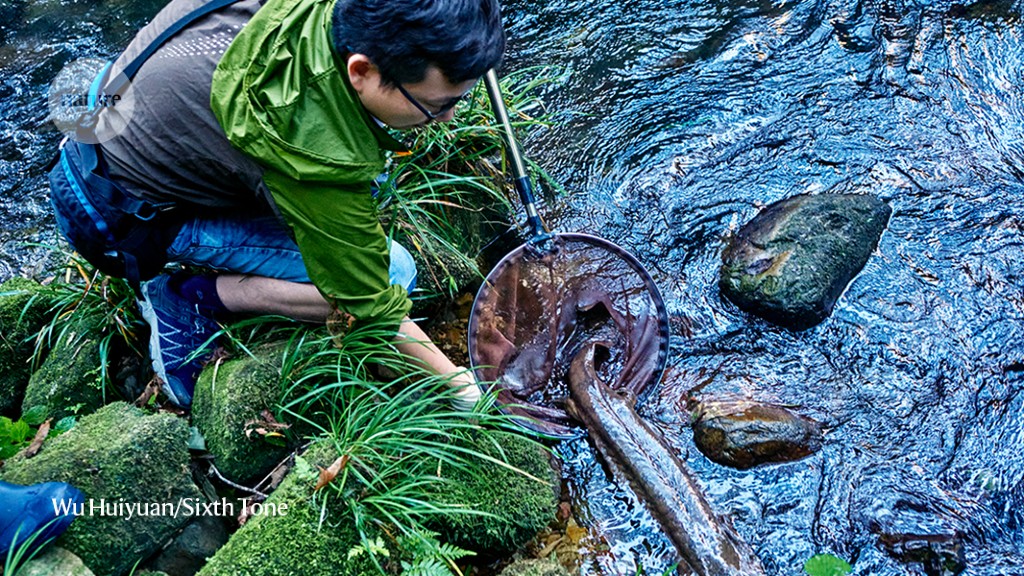Protector of the Giant Salamander
I study the Chinese giant salamander (Andrias davidianus), which is native to the Yangtze River Basin in central China. This particular species is critically endangered in the wild due to habitat loss and overexploitation – a particular issue is their use in traditional Chinese medicine. My research focuses on the conservation biology and evolutionary ecology of the salamander.
In this photo, I release a Chinese giant salamander at the Golden Whip River in Zhangjiajie National Forest Park in the early morning of September 2021. My team and I caught the salamander the night before, to measure its size and collect samples from tissues for genetic purposes. analyzes.
My interest in aquatic animals started when I was a child. I grew up in a rural village in Hunan province and remember spending most of my childhood playing and fishing near my home. Because of this, I knew where each species of fish lived in nearby rivers and lakes, and this sparked my interest in river ecology.
I work as an associate professor at Jishou University, where I lead a team dedicated to researching this species of salamander. Wild salamanders are silent, nocturnal animals that live in remote areas. This makes their study difficult. My team tried many creative ways to track the animals, including walking along the banks with torches and photographing salamanders underwater, but these techniques didn’t work as well as we needed them to. We eventually discovered that the best way to trap wild salamanders is to use small live fish and chicken livers as bait. Research is hard, but we’ve learned to be patient and celebrate every little success we have.
Studying Chinese giant salamanders also taught me an important life lesson: adapt to thrive. When food is plentiful, salamanders grow rapidly; when food is scarce, they can go up to 11 months without feeding. In my personal and professional life, I have had successes and failures, and this lesson has served me well.


Comments are closed.